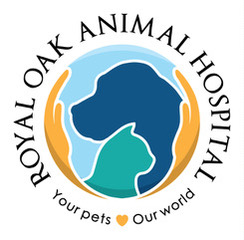Library
-
Bathing is very important for the proper maintenance of feathers. The dry air in our homes created by central heating and air conditioning is not conducive to the maintenance of healthy feathers and skin, so pet birds should be encouraged to bathe at least three to four times a week. This handout provides helpful tips and safety precautions for bathing your bird.
-
Baylisascaris procyonis, also known as the raccoon roundworm, is a parasite found in the intestinal tract of many raccoons. In some cases, this parasite may also spread to dogs and, less commonly, cats. Infection in dogs often results in no symptoms, but it can result in diarrhea. In rare cases, migration of parasite into the dog’s nervous system can result in encephalitis (brain inflammation), and death. Baylisascaris procyonis can also rarely infect humans.
-
Elongated beak and/or toenails are reasons for veterinary care in all pet birds. Beaks should not be trimmed regularly unless performed by an avian veterinarian. Toenail trimming may be done at home, but only when taught by an experienced bird breeder/owner or avian veterinarian.
-
If they are well looked after, including proper diet and husbandry, bearded dragons are reasonably hardy animals. Common health conditions of pet bearded dragons include CANV, atadenovirus, metabolic bone disease, parasites, infectious stomatitis (mouth rot), and respiratory infections. Any change from normal is cause for concern and should be immediately evaluated by your veterinarian.
-
Bearded dragons have specific environmental requirements to thrive as our pets. This handout outlines their housing needs, including enclosure size, appropriate bedding, preferred accessories, and necessary lighting and temperature control.
-
Bearded dragons are well-known small to medium-sized lizards. They are currently considered one of the most popular pet lizards for all ages. Owners often refer to their pets as 'beardies'. This handout explains how they differ from other pets and provides tips for selecting a healthy beardie to keep as your pet.
-
Bearded dragons are susceptible to several health problems; understanding them will help you prevent them from occurring in your pet and know when to seek veterinary attention. Problems described in this handout include salmonellosis, avascular necrosis, tail rot, abscesses, and dystocia (egg binging).
-
The bearded dragon is a popular small- to medium-sized pet lizard. Bearded dragons are omnivorous, meaning they eat both plant and animal-based foods, including insects. They should consume a diet that is 50% insects and 50% green leafy vegetables. This handout is a general guide for feeding pet bearded dragons a nutritious and balanced diet.
-
Bedinvetmab is an immunotherapeutic/biologic medication used to alleviate osteoarthritic pain in dogs. This medication is given by an injection under the skin. Contact your veterinarian if you think your dog is having an adverse reaction to this medication.
-
Dogs and cats use aggressive signals to communicate and can often do this without causing injury. It is important to learn to recognize subtle signals to prevent an escalation of aggression. Some aggression reflects underlying medical and behavioral illness. Any aggressive behavior in dogs and cats should be assessed to determine the cause and establish a safety protocol. Aggressive behavior in dogs and cats can lead to serious injury to people and other pets.


